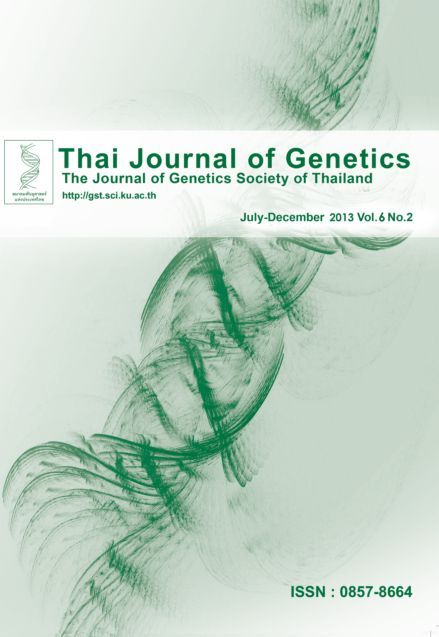Sexing and genetic diversity in the genus Charadrius based on CHD gene
DOI:
https://doi.org/10.14456/tjg.2013.114Keywords:
sex identification, chromo-helicase-DNA binding (CHD) gene, Charadrius spp.Abstract
Charadrius spp. are migratory shorebirds in Thailand during the non-breeding season inwhich adult plumages are not clearly sexually dimorphic. In this work, a molecular approach was used to determine the gender and genetic diversity. Amplification of intron length polymorphisms in chromo-helicase-DNA-binding (CHD) genes on both Z and W chromosomes of three Charadrius spp. included 87 lesser sand plover (Charadrius mongolus), 27 greater sand plover (C. leschenaultii) and 3 kentish plover (C. alexandrinus). The resulting PCR products from 2550F/2718R primer showed fragments on a conventional agarose gel electrophoresis with size differences ranging from 200 bp between the two respective ZW allele. Males were identified by the presence of a single band about 650 bp (CHD-Z). Heterogametic females were identified by the presence of a second additional fragment length of approximately 450 bp (CHD-W). The CHD-Z fragments were purified and analysed by sequencing. The multiple sequence comparison was accomplished using ClustalX and PHYLIP software. These data demonstrate that the CHD-Z sequence related with morphology and can be used for genetic diversity study. The results of molecular sex determination and genetic diversity analyses will also have implications for shorebird conservation.



